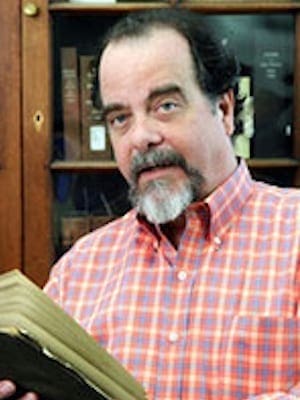The Saturday between Good Friday and Easter Sunday is the often-neglected day of Holy Week. “Dark Saturday” it is sometimes called and, like its name, it is a day that tends to get lost in the shadows.
The Saturday between Good Friday and Easter Sunday is the often-neglected day of Holy Week. “Dark Saturday” it is sometimes called and, like its name, it is a day that tends to get lost in the shadows.
The first shadows that tend to obscure Dark Saturday are those cast by the cross of Good Friday. The shadow of the cross is long and deep. The bright light of the Bethlehem star that heralded the birth of Jesus is eclipsed, first by the horror of the cross, and then by the darkened skies that the Gospel writers claim turned midday into midnight as Jesus agonized and died.
Other shadows tend to obscure Dark Saturday, too. Like the women who watched Jesus die, contemporary followers of Jesus fill the day with preparations. The women, the Gospel writers say, prepared spices and ointments to take to the tomb of Jesus once the Sabbath passed. They focused attention on what they would do at sunrise on Sunday. They prepared to anoint the dead body of Jesus to mask the smell of death. They prepared to address the issue of their loss of hope in the face of the death of Jesus.
Unlike the women who watched Jesus die, contemporary followers of Jesus know that the tomb will be empty as Sunday dawns. Because we know the end of the story, contemporary followers of Jesus fill the day with last minute preparations that will ensure the glorious shout of the angel: “He is risen!”
Bright anticipations of the empty tomb also overshadow the significance of Dark Saturday. In our eagerness to shout “He is risen!” we eclipse the truth that we have more in common with the women who watched Jesus die than we care to confess.
Contemporary followers of Jesus know more about the reality of suffering and death than we know about resurrection. We hope for resurrection, but we experience suffering and death. The truth is that Dark Saturday is where we live, not only the Saturday before Easter, but most of our days.
We hope for resurrection, but we live with the sorrow and grief of loss. We mourn the loss of family and friends to death, illness and confusions. We reel from time to time in a world filled with corruption, violence and despair. We struggle with the reality of lost hope. And in the face of lost hope we sometimes find the hope to endure the darkness.
The hope to endure the darkness is what Dark Saturday calls us to. Dark Saturday is a chance to invest the sorrow and pain of our lives in the hope of resurrection. The hope of resurrection passes through the darkness. It does not skirt the darkness. It does not deny the darkness. The hope of resurrection endures the darkness.
Good Friday is behind us. Easter morning awaits us. In between is Dark Saturday.
Dark Saturday is an opportunity. Unlike any other day of the year, we have the gift of an opportunity to linger in the darkness. As we linger in the darkness, as we open ourselves to the honesty of our lives, we have the chance to see both the length of life’s sorrows and the depth of life’s hope.
And so Saturday, linger in the darkness of the shadow of the cross and open yourself to the fullness of hope that endures suffering and sorrow.
Rick Wilson is the Columbus Roberts Professor of Theology and chair of the Roberts Department of Christianity in Mercer University’s College of Liberal Arts in Macon, Ga.

